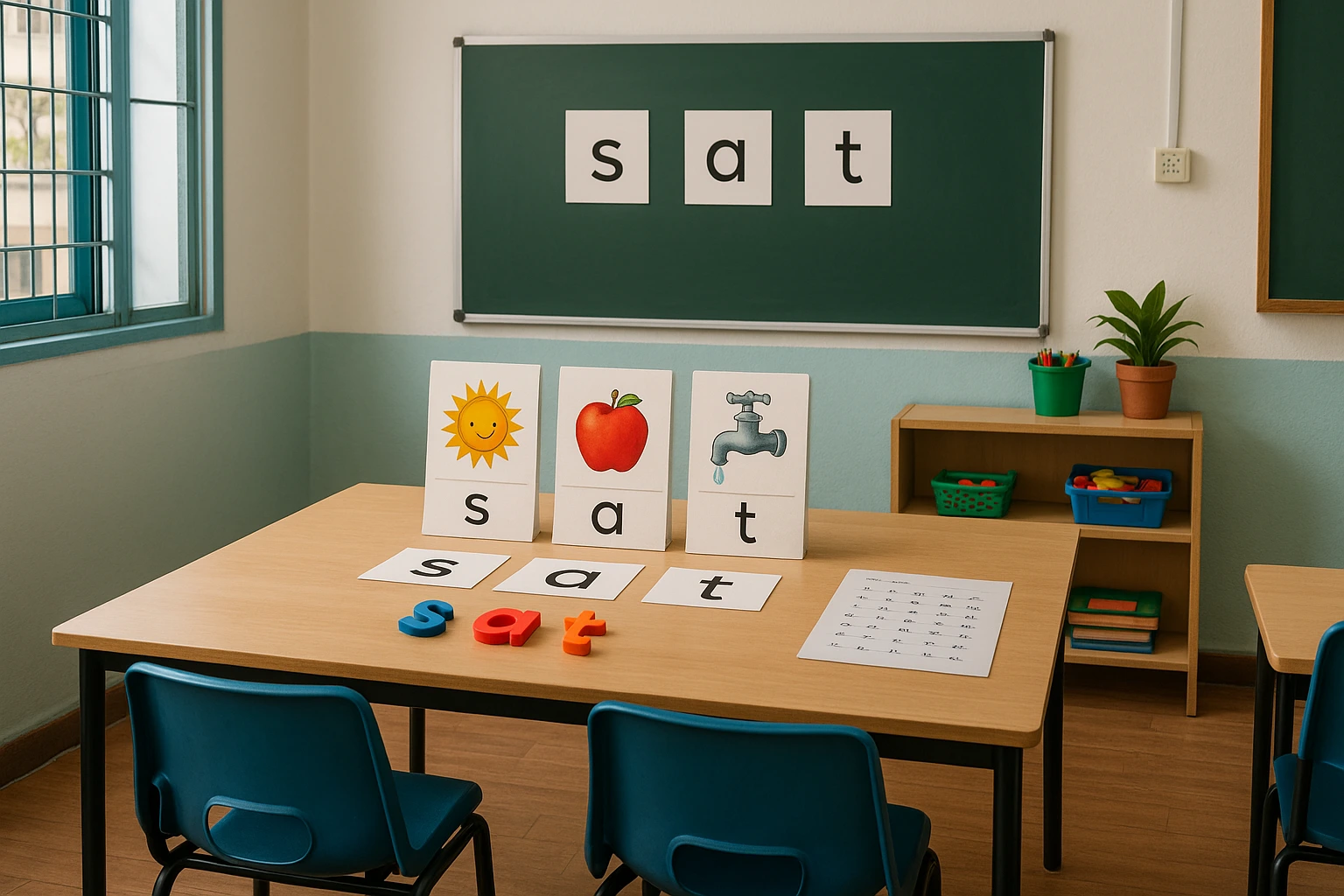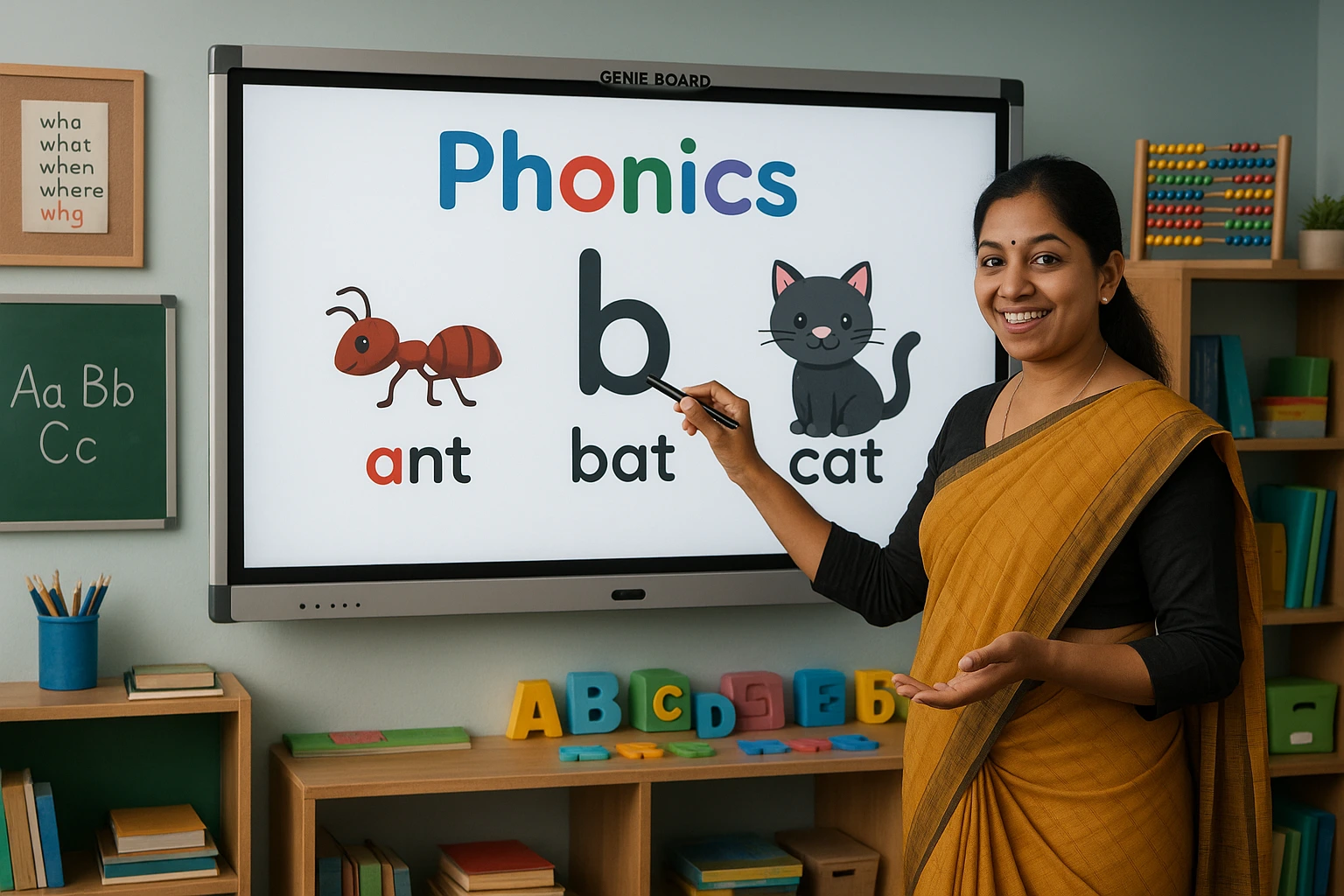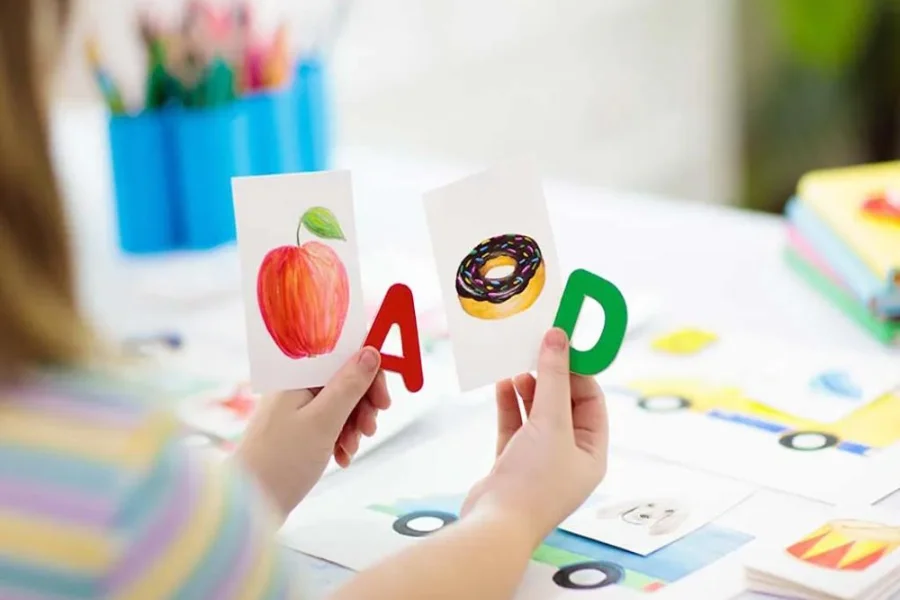How to Teach Phonics for Beginners?
Source: cdnparenting
How to Teach Phonics for Beginners?
Learning sounds is the earliest and a significant step in the early years of children when they begin to recognize letters. Phonics supports beginners in understanding letters and sounds, building adept reading skills. Teach Phonics for Beginners with easy sounds and use fun, interactive methods like songs, flashcards, and dynamic activities. A gentle pace and uniform practice can turn early reading into a joyous experience.
Table of Content
Step-By-Step Guide for Teaching Phonics to Beginners
Teaching Phonics to Beginners doesn’t have to be complicated; in fact, learners flourish when engaged with letters through play, action, and repetition. It is about making learning feel natural and delightful using play, creative exercises, and consistent repetition.
A Step-By-Step Guide for Teaching Phonics to Beginners
- Step 1: Letter Sounds: Present the most familiar sounds each letter makes- /n/, /t/, /a/, /i/, etc.
- Step 2: Incorporate Pictorial and Auditory Resources: Support sound recognition with pictures, songs, and repetition. Highlight the mouth activity for each sound.
- Step 3: Familiarize Letter Shape with Sounds: Help children relate each sound to writing by practicing the letter shape as they enunciate the sound aloud.
- Step 4: Blending: Show how to blend sounds into easy words having a consonant-vowel-consonant format (CVC words) like cat, sat, mat, etc.
- Step 5: Familiarize with Segmenting: Teach how to break words into their respective sounds for writing. For instance, guide them to hear /h/ /o/ /t/ to spell- hot.
- Step 6: Teach Phonics with Games and Reading Practice: Integrate phonics-based texts, innovative games, and jingles to support new learning.
- Step 7: Revisit and Present New Sounds Gradually: Review previous learning. Once the basics are mastered, gradually introduce advanced concepts.
Learning Phonics is an integral step in reading development. Teach Phonics by a constant emphasis on letters and sounds to help children evolve into confident and capable readers.
For details of Phonics Teacher Course, Call / Whatsapp on +918104606573 / +919869546913.
Click Here, to download the brochure of Phonics Teacher Course!

Effective Ways to Teach Phonics at Home
Parents can Teach Phonics for Beginners by assisting their children in understanding letters and sounds using everyday materials and practical ways.
Effective Ways to Teach Phonics at Home include
Teach Phonics with Letter Sounds
Focus on introducing the sound each letter makes before familiarizing letter names.
Use Picture Cards
Create picture cards with letters and images that correspond to their sounds. For instance, show “f” with a picture of a fish.
Blending Practice
Use simple words like cat or dog to introduce how individual sounds blend together. Enunciate each sound slowly and then blend them aloud.
Reading Aloud
Pick phonics-based narratives and read them aloud. Point to each word and sound it out slowly when possible.
Play Phonics Games
Teach Phonics at home using innovative sound games, letter quests, or sorting activities using letter magnets or paper cut-outs.
Sing Phonics Songs
Use songs and poetry that highlight letter sounds. Repeated through music helps enhance sound recognition.
Promote Writing Practice
Have children write letters while saying their sounds. Use sand, chalk, or whiteboards to make it entertaining.
Support with Everyday Words
Show out words in familiar situations—like signs, food tags, or packaging—and ask what sounds they hear.
Teaching Phonics at Home doesn’t demand extraordinary approaches—simply time, patience, and regular practice. A little understanding each day can make a significant difference in establishing comprehension skills.
For details of Phonics Teacher Course, Call / Whatsapp on +918104606573 / +919869546913.
Click Here, to download the brochure of Phonics Teacher Course!

How to Learn Phonics beyond the Basics?
Focus on expanding phonics knowledge after developing a proficiency in primary letter sounds and blending skills. Learning phonics above the basics involves understanding syllables, spelling rules, reading fluency methods, etc. This stage strengthens reading accuracy and writing aptitudes.
Here are practical ways to Learn Phonics beyond the Basics:
- Explore Digraphs and Blends: Teach sounds made by two letters like- sh, ch, th, and blends like- bl, gr, st. These are essential for reading longer words.
- Know the Silent e Rule and Long Vowel Sounds: Teach vowel combinations- ai, ee, oa, and the silent e rule.
- Concentrate on Syllables and Word Format: Train children to split longer words into syllables. This helps in interpreting unfamiliar words effortlessly.
- Learn Spelling Rules: A knowledge of rules like consonant doubling or modifying ‘y’ to ‘i’ before adding ‘es’ aids in both spelling and reading.
- Use Rhyming Groups and Word Families: Master reading and writing by practicing words from the same family, such as fame, came, tame, etc.
- Promote Independent Reading: Allow children to read easy chapter books that use phonetic patterns they’ve learned.
To gain proficient phonics understanding and instruction techniques, registering in a Phonics Teacher Training Course is highly advantageous.
Vidhyanidhi Education Society (Govt. Regd.) presents a Phonics Teacher Training Course developed to equip educators with cutting-edge phonics skills and instruction methods. This Phonics Teacher Training Course includes applicable tools, interactive methods, and adept guidance to help Teach Phonics for Beginners confidently. The Phonics Teacher Training Course by Vidhyanidhi Education Society (Govt. Regd.) is ideal for those wanting to Teach Phonics for Beginners effectively at home or in the classroom.
Boost skills! Join the Phonics Teacher Course from Vidhyanidhi Education Society today!
For details of Phonics Teacher Course, Call / Whatsapp on +918104606573 / +919869546913.
Click Here, to download the brochure of Phonics Teacher Course!
Phonics Teacher Training Course
FAQs
What do you Teach First in Phonics?
Teach single consonants and short vowel sounds first so children can quickly blend simple CVC words and develop early reading proficiency.
What is the First Stage of Phonics?
Stage 1 is sound awareness: tuning into everyday noises, rhyme, rhythm & alliteration before letters; Vidhyanidhi Education Society highlights this vital listening step.





